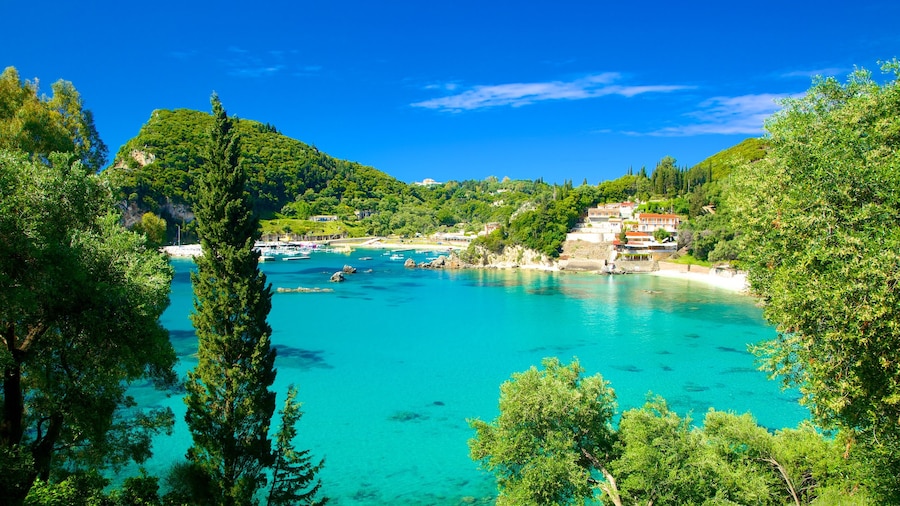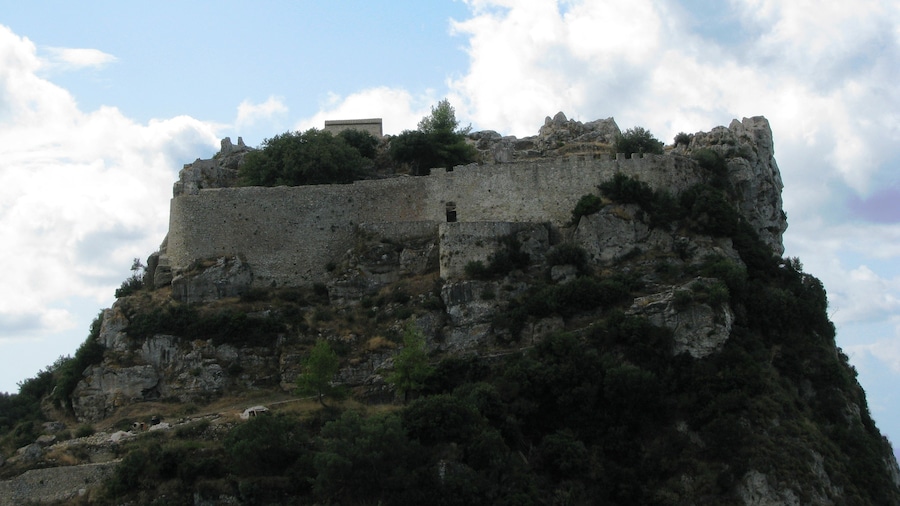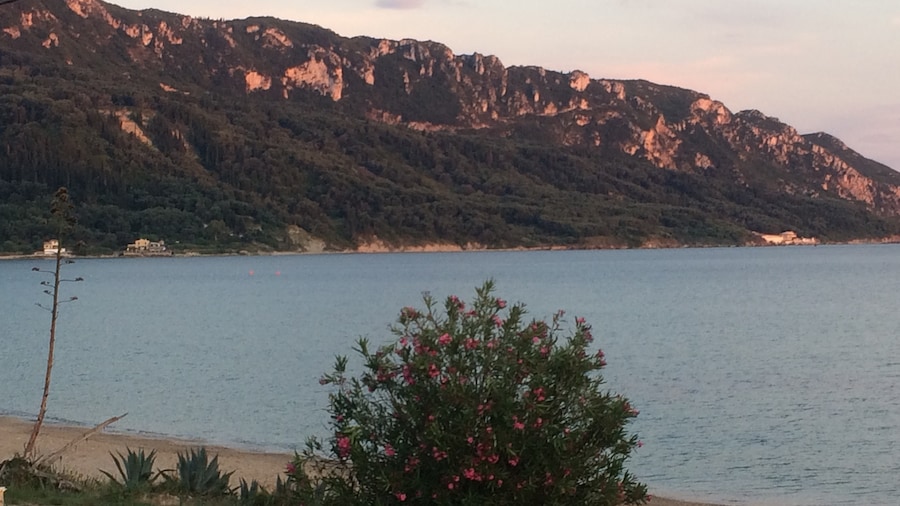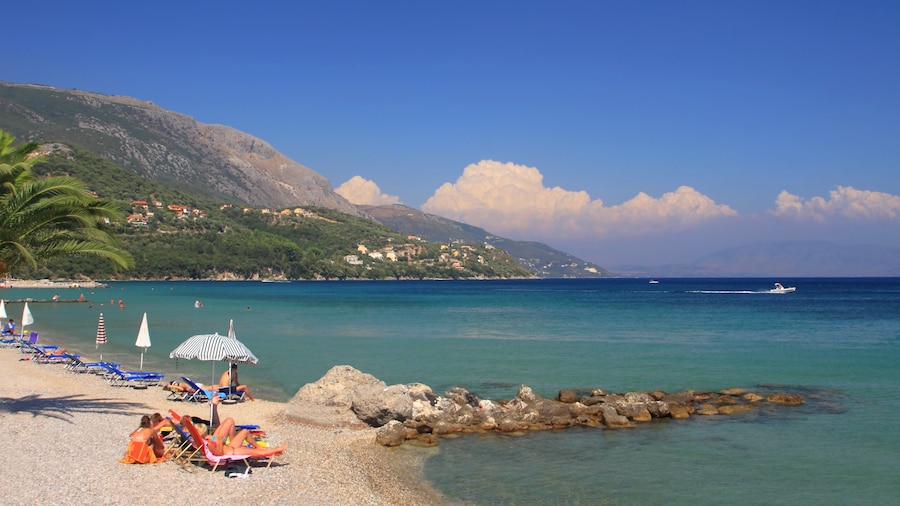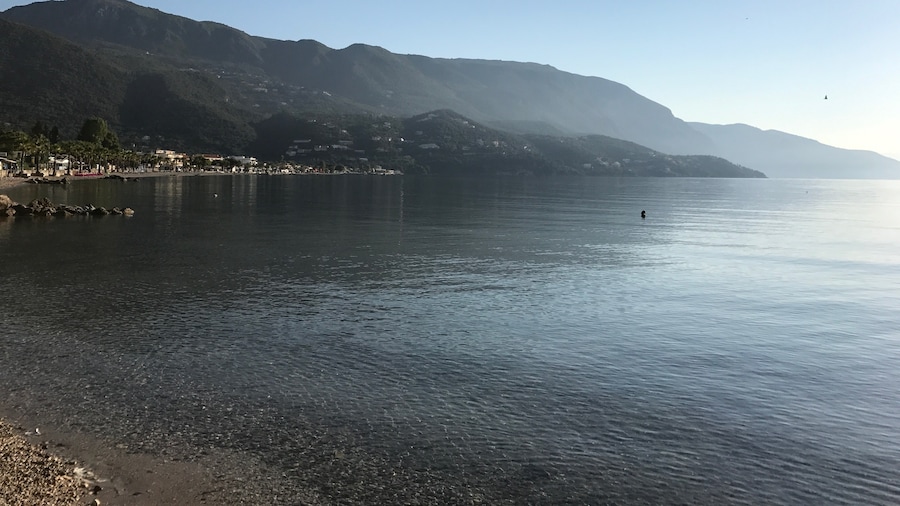Visit this working monastery to marvel at a masterpiece of monastic architecture and experience the traditional life of Greek monks.
Experience the peaceful and picturesque environment of Paleokastritsa Monastery. Observe the daily routines of Greek monks, admire an impressive hilltop structure and enjoy spectacular views of Corfu’s countryside. Paleokastritsa Monastery sits on a headland above the village of Paleokastritsa, on Corfu’s northwest coast.
The monastery, which spreads over two levels, presents an excellent showcase of Greek monastic architecture. Its origins date back to 1228, although much of today’s building was built during the 18th century. Start your visit on the lower level, a flower-filled garden with whitewashed arches that resemble a tunnel. Look for the monastery’s traditional olive press. Next, visit the small shop to see the olive oils and kumquat liqueur made by the monks.
Climb the stone staircase to the monastery’s upper level, dominated by an airy courtyard and small chapel. Check out the well in the center of the courtyard. A local legend states that people who toss a coin into it will one day return to Corfu. Don’t miss the museum, which has displays of Byzantine figurines, religious books and other ecclesiastical objects. The living quarters of the resident monks are on the upper level, although they are not accessible to visitors.
Additional highlights of the monastery are the unrivaled views. Have your camera ready to take postcard-perfect pictures of Corfu’s rugged coastline, green countryside and outlying islets.
Walk from Paleokastritsa to the monastery in about 20 minutes via a road lined with cypress and olive trees. Alternatively, it’s about a 40-minute drive from the center of Corfu Town. Use the free car park in front of the monastery’s entrance. Public buses run from Corfu Town to Paleokastritsa at regular intervals throughout the day. After visiting the monastery, enjoy a swim at nearby Paleokastritsa Beach.
Paleokastritsa Monastery is open daily and admission is free. Remember that this is a functioning monastery, so dress appropriately and respect the privacy of the resident monks when visiting. Shawls are available at the monastery’s entrance to cover your shoulders and legs. Arrive early to avoid large tour groups.





